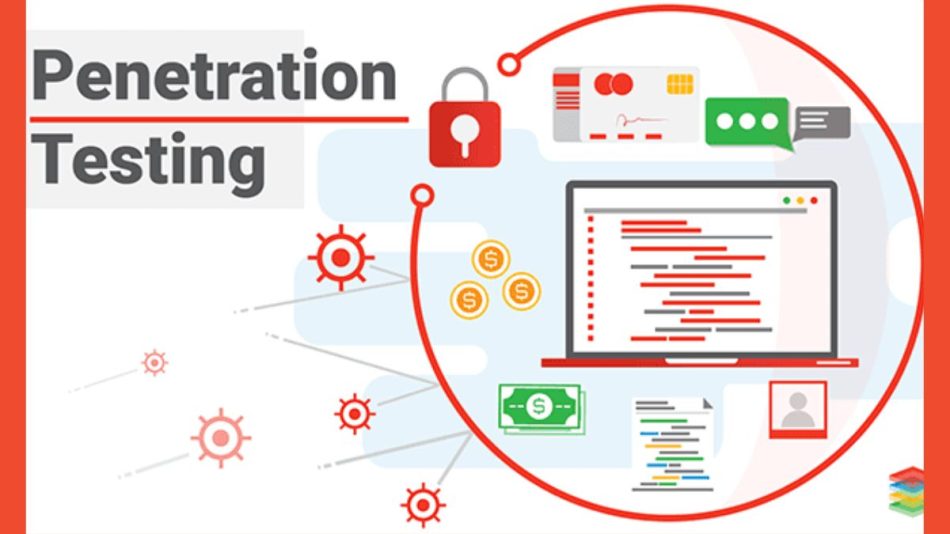Penetration Testing: An incorrect configuration of the equipment, default configurations of the applications, or an outdated system could be an entry point into the infrastructure. The Penetration Test activity (preceded by that of Vulnerability Assessment) consists of the implementation of complex attack scenarios and, in addition to what is inspected with the VA, non-public vulnerabilities are also verified and tested (potentially present in the case of software developed ad hoc and/or not widely used).
The PT activity is an extension of the VA, and, starting from the vulnerabilities that have emerged, it verifies the actual impact by trying to penetrate the target system.
Penetration test: what it is
The penetration test (often called “pen test”) is a fundamental phase in the assessment of the health of a company’s IT infrastructure. It serves to verify that the planned security systems meet the needs of the stakeholders involved.
In other words, through the penetration test, the company can verify that it has an adequate level of security and that it can optimally defend itself against the main attacks which may concern, for example, the authentication phase or interactions with databases.
Purpose Of The Penetration Test:
Therefore, the activity’s purpose is to use known or unknown vulnerabilities to test the possibility of unauthorized access to target systems or applications. Penetration testing is a manual activity that involves the use of automated tools, among others.
Priority:
For running services of this type to be truly effective, you must schedule regular testing runs. Indicatively, an analysis of the system is recommended to evaluate the effectiveness of the countermeasures adopted by the company after 3/6 months from the first PT. However, a penetration test is always recommended following any significant change to the system under examination.
Penetration testing for companies: why it’s needed
Therefore, the penetration test helps companies know the level of security guaranteed by their current infrastructure and evaluate the probability that an internal or external attacker can enter corporate resources. In short, the penetration test makes it possible to attempt to “attack” the company’s infrastructure, but without the risks that a real attack would entail, including data integrity and availability.
The penetration test for companies is a fundamental measure of the reliability of the systems, even those that the company does not own: in this case, it will be necessary to sign a contract that defines the timing, the objectives, and, in short, regulates the activity of penetration tests.
Two examples of penetration tests for companies are:
- External testing, to verify the probability that from the outside, in fact, it will be possible to penetrate the company perimeter and to how deep starting from the information accessible through search engines and other publicly available resources;
- Internal testing to evaluate how much corporate risk data would be if an attacker, for example, managed, through social engineering operations, to obtain the access credentials of an employee and, from there, dig into company resources.
Vulnerability assessment and penetration test: what are the differences
While similar, the differences between vulnerability assessments and penetration tests are still substantial. The penetration test has the ultimate goal of trying to penetrate corporate computer systems by exploiting a vulnerability: in fact, it simulates a real attack from the outside or, as seen, from the inside; therefore, it is very impacting on corporate resources and requires an infrastructure shutdown.
Now that hybrid work and cloud applications have expanded enterprises’ security perimeter, and vulnerability assessment is even more important. The vulnerability assessment’s objective is to evaluate all the vulnerabilities present in the corporate infrastructure (applications, systems, devices, services). Still, it does not require a working stop and can be programming in a moment of ordinary operation.
However, it is clear that companies need both: they are two complementary assessments. One (the vulnerability assessment) finds all the vulnerabilities; the other (the penetration test) simulates an attack and how it could be conducted to evaluate the effects it would cause and how deep it is possible to reach corporate resources.
Penetration test and cost: how to evaluate the price
The cost issue when it comes to penetration tests is deeply felt by companies that aim at optimizing economic resources. However, evaluating a consultancy company or a freelancer based only on the price could be counterproductive: it is better to follow the saying, “the more you spend, the less you spend.”
When it comes to penetration tests, in fact, the cost is linked not only to the operations that will actually be carried out to evaluate the IT security of the systems; but also to the professionalism, previous experiences, and the results obtained, which represent an incredible added value and concretely measure the ability of the professional or the company to be able to perform the required work in the best possible way.
While penetration testing may seem like just a cost without benefits, the reality is quite different: spending a little more on penetration testing means you’re less likely to spend even more on a cyber intrusion – and the resulting threat to the company, customer, and supplier data – in the future.
Also Read : Which Solution For Cryptolocker?




